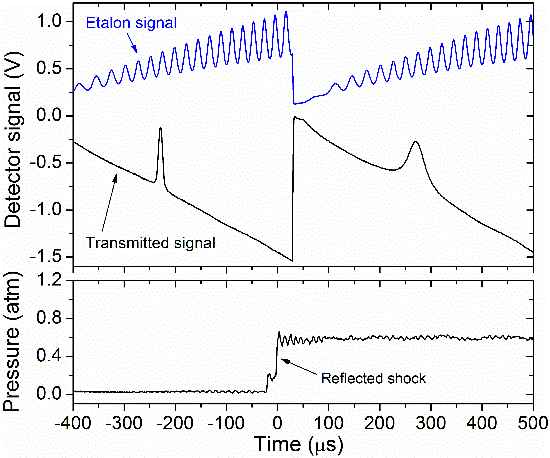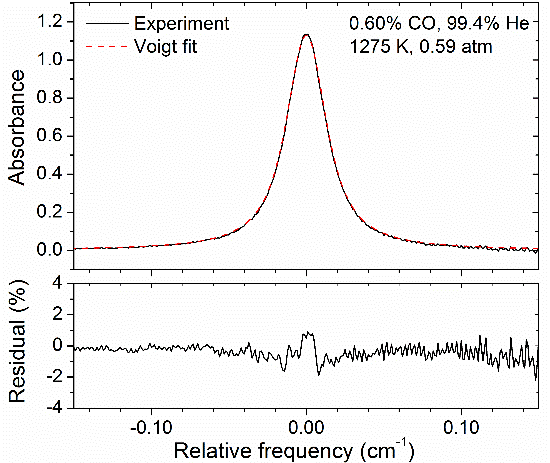Modern lasers allow the wavelength of the laser to be scanned across some range via various modulation methods. Scanned-wavelength diagnostics have an advantage over fixed-wavelength diagnostics in that an entire spectral line shape can be obtained rather than the absorption at a single wavelength.
When coupled with shock tubes, scanned-wavelength diagnostics permit measurements of spectral line shapes at high temperatures. Typical scan rates of commercial IR lasers (≥2 kHz) permit multiple scans during an average shock-tube experiment. These measurements can be used to infer spectroscopic information such as broadening coefficients, which are important from a fundamental spectroscopy standpoint. Additionally, the measurement of these spectral parameters can aid in making accurate fixed-wavelength measurements for chemical kinetic applications. Scanned-wavelength diagnostics can also be used to measure the content of mixtures at ambient or near-ambient conditions.
In our laboratory, scanned-wavelength diagnostics have been successfully applied to CO and CO2. Shown in the figure is an example of the measurement of the line shape of a CO transition, which permitted the inference of several spectroscopic parameters.


Experimental traces (top two panels) and the extracted absorbance and best-fit Voigt profile (bottom two panels) from a measurement of the R(12) line in the 1←0 band of CO. Adapted from [1].
References:
[1] C. R. Mulvihill, S. A. Alturaifi, and E. L. Petersen, “High-Temperature He- and O2-Broadening of the R(12) Line in the 1←0 Band of Carbon Monoxide,” Journal of Quantitative Spectroscopy and Radiative Transfer, Vol. 217, 2018, pp. 432-439.
